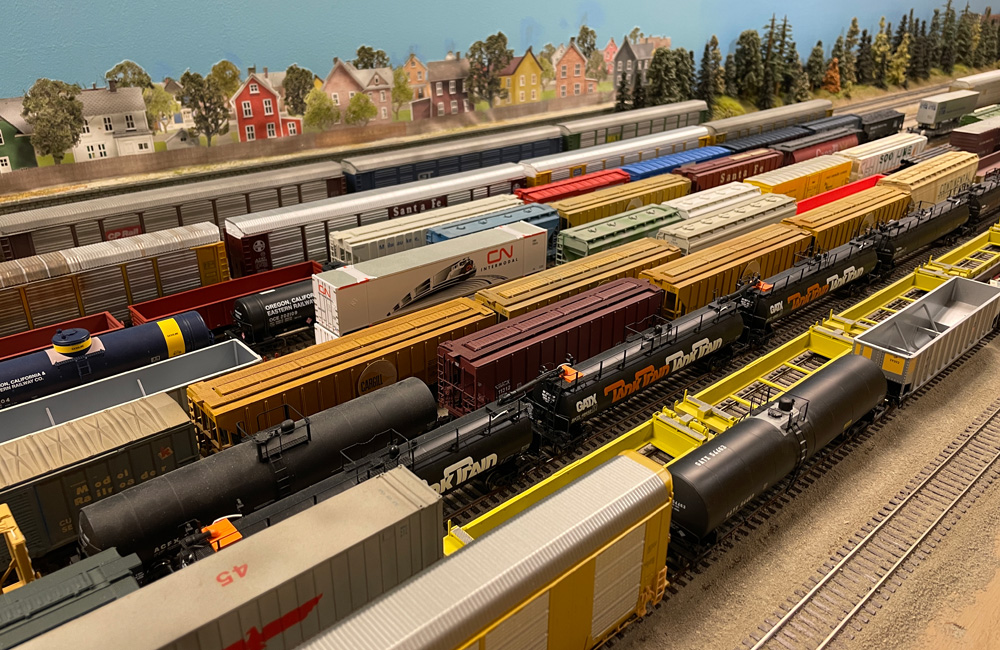
Q: I’m planning an HO scale switching layout designed to squeeze a maximum number of industries into a corner shelf. To capitalize on limited real estate, I intend to use low-profile backdrop buildings. I want to diversify a freight car fleet with a variety of freight cars, not just the ubiquitous boxcar. I’m looking at several Walthers buildings: River City Textiles, with the water tank on top; Heritage Furniture, where the tracks run under the building; and Centennial Mills, with its distinctive dust collectors. How do I justify something other than boxcars to serve these industries? — William Schmid
A: If your heart is set on those three structure kits, you still have some ability to diversify a freight car fleet by choosing what industries those structures represent.
The cyclones on the Centennial Mills building mark it as a flour mill. Depending on the era you model, the incoming grain might travel in covered hoppers rather than boxcars. Outgoing flour would probably be shipped in barrels or sacks, though, which still requires boxcars. But if your grain is coming in hoppers, that’s a good thing, because it distinguishes incoming from outgoing loads.
Other industries might also use those dust collectors, though. For instance, a woodworking factory that mills doors, window sashes, trim, and molding would use them to collect sawdust. Cyclone collectors are also used by other facilities that generate fine airborne particulates, such as the concrete, steel, ore processing, paper, and recycling industries. But none of those really fit the look of the Centennial Mills building, so if you don’t want to keep it a flour mill, a door and sash mill is probably the way to go. Its products will ship out in boxcars, but you can receive lumber on bulkhead flatcars.
If you change Centennial Mills to a woodworking plant, you probably don’t want to keep Heritage Furniture as a furniture factory, too. Luckily that building is more generic looking and can be changed to a broader variety of businesses. How about something in food processing, like a brewery, cannery, or creamery, so you can ship out its product in reefers?
To my eye, River City Textiles doesn’t look much like a textile mill. Wood-frame factories commonly had water tanks on the roof to feed fire-suppression systems, but a modern-looking brick structure like River City Textiles would not be so great a fire risk and would likely have fire-suppression systems fed by city water. That means the tank on the roof would likely be there to store water for the manufacturing process. A pulp-only paper mill is a possibility, though to receive the bleach and other chemicals a paper mill needs, you’ll have to supplement with a couple more car spots serving some vertical storage tanks. But then, you’ll be able to bring in some tank cars, too!
If you’re interested in certain types of freight cars, Jeff Wilson’s book Commodities by Freight Car is a great place to start. Then you can choose industries that match the cars you want to run.
Anyone looking to diversify a freight car fleet only has to diversify their rail-served businesses.
Send us your questions
Have a question about modeling, operation, or prototype railroads? Send it to us at AskTrains@Trains.com. Be sure to put “Ask MR” in the subject.













